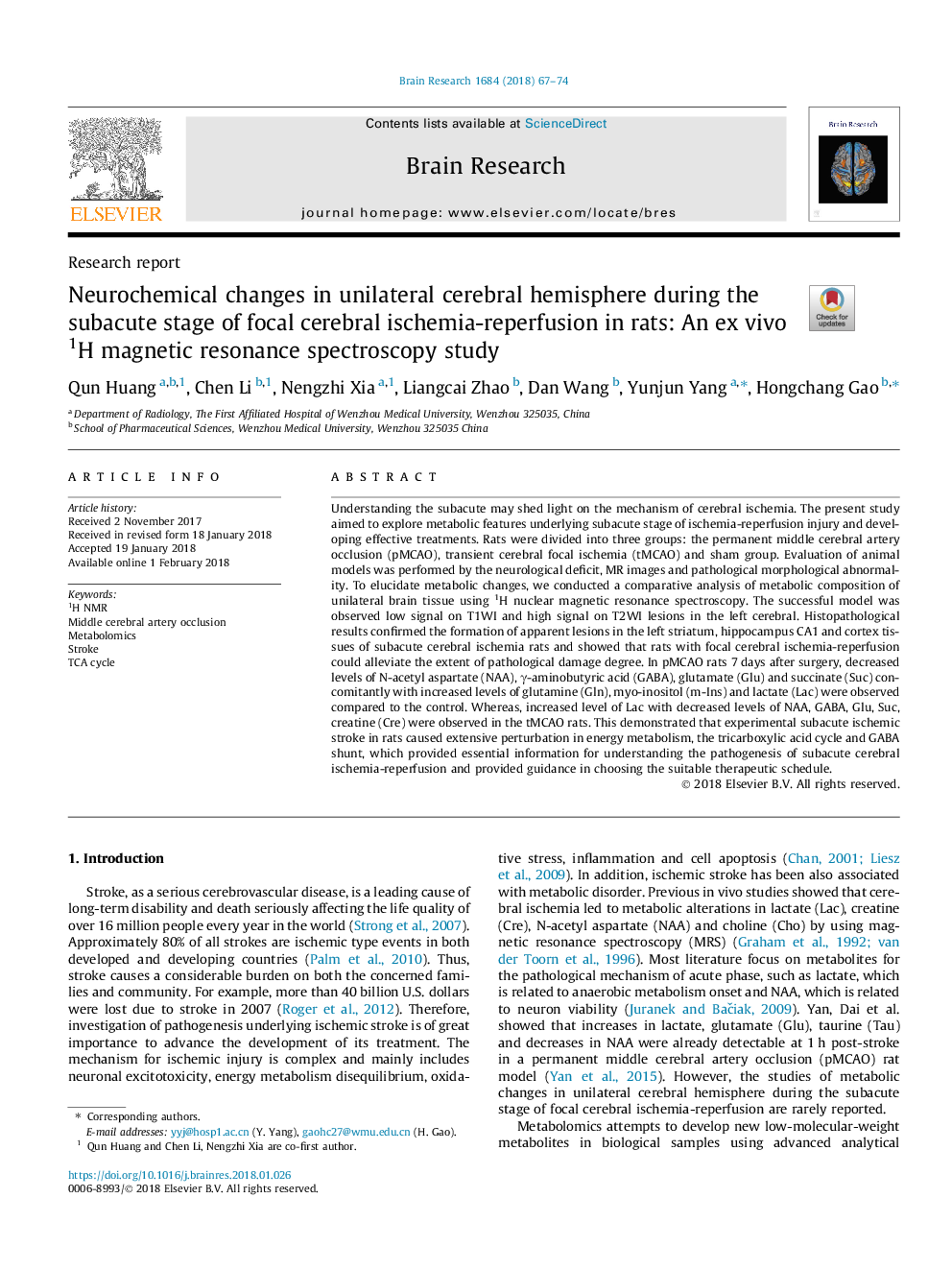| Article ID | Journal | Published Year | Pages | File Type |
|---|---|---|---|---|
| 8839872 | Brain Research | 2018 | 8 Pages |
Abstract
Understanding the subacute may shed light on the mechanism of cerebral ischemia. The present study aimed to explore metabolic features underlying subacute stage of ischemia-reperfusion injury and developing effective treatments. Rats were divided into three groups: the permanent middle cerebral artery occlusion (pMCAO), transient cerebral focal ischemia (tMCAO) and sham group. Evaluation of animal models was performed by the neurological deficit, MR images and pathological morphological abnormality. To elucidate metabolic changes, we conducted a comparative analysis of metabolic composition of unilateral brain tissue using 1H nuclear magnetic resonance spectroscopy. The successful model was observed low signal on T1WI and high signal on T2WI lesions in the left cerebral. Histopathological results confirmed the formation of apparent lesions in the left striatum, hippocampus CA1 and cortex tissues of subacute cerebral ischemia rats and showed that rats with focal cerebral ischemia-reperfusion could alleviate the extent of pathological damage degree. In pMCAO rats 7â¯days after surgery, decreased levels of N-acetyl aspartate (NAA), γ-aminobutyric acid (GABA), glutamate (Glu) and succinate (Suc) concomitantly with increased levels of glutamine (Gln), myo-inositol (m-Ins) and lactate (Lac) were observed compared to the control. Whereas, increased level of Lac with decreased levels of NAA, GABA, Glu, Suc, creatine (Cre) were observed in the tMCAO rats. This demonstrated that experimental subacute ischemic stroke in rats caused extensive perturbation in energy metabolism, the tricarboxylic acid cycle and GABA shunt, which provided essential information for understanding the pathogenesis of subacute cerebral ischemia-reperfusion and provided guidance in choosing the suitable therapeutic schedule.
Related Topics
Life Sciences
Neuroscience
Neuroscience (General)
Authors
Qun Huang, Chen Li, Nengzhi Xia, Liangcai Zhao, Dan Wang, Yunjun Yang, Hongchang Gao,
